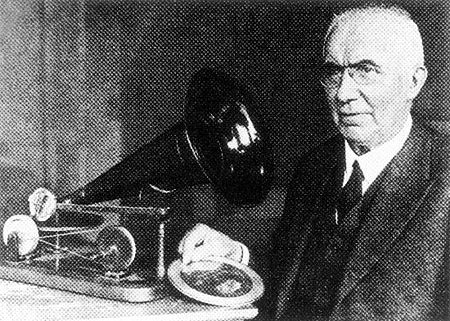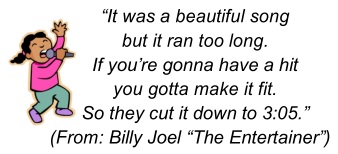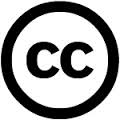Audio
Content
|
Classroom
|
Home
|
Dictation
(Full or partial)
Dictation is always a good option for letting student
hone their listening skills. The can be "Full
dictation"- such as 5 or 6 sentences that the student
transcribes to paper. Or it can be "Partial dictation",
where a student is given a printed text from which
blanks spaces have been substituted for some of the
words, and the student fills in the words as they listen
to the spoken text.
(Tip: If you create a "partial dictation" exercise,
consider carefully which words you omit. "Content words"
rather than "Function words" may be better candidates
since they add more to the meaning...)
|

|

|
"Listen
and Repeat"
Good practice whether used in the classroom or sent home
with the student! Make sure the recording allows
sufficient "repeat time" so that the student has time to
realize the sentence or phrase has ended, and then
repeat. I like to provide twice the length of the spoken
segment as "silent space" to allow repetition.
|

|

|
Text
Articles
There are so many great subjects of interest to student
that can fit in with topical lessons or work along side
grammar or vocabulary lessons.
Consider articles about your community, holidays,
seasons, civics, the family, etc.
|

|

|
Stories
Spoken stories allow us to tie the content into what is
being covered in class. Stories might emphasize use of
the past tense etc...
You can also introduce selections from American folklore
or other literature as part of an effort to teach about
life in our country.
|

|

|
Dialog
These work well with the current class focus and provide
an opportunity to utilize several voices in a single
recording.
|

|

|
"What's Next"
The old "Crossroads" series from Oxford included
recordings that set a conversational context, and then
the student must choose from several possible following
lines. This is also similar to what is used in CASAS
listening tests. It is easy to create some exercises of
your own!
|

|

|
Reference
Recordings of individual words covered in class can be
very useful for students so that at home they can review
the pronunciation. When we cover vocabulary in class,
students often try to make written notations using their
own L1 in an attempt to document the sounds. Of course,
if their home language does not contain some of the
sounds of English this endeavor is difficult. Record the
words so they can take them home and reference their
pronunciation! (You can also add recorded sentences
using the words)
|
|

|
Drills
Perhaps it was naive of me to be surprised when students
specifically requested that I provided recordings of
simple grammar drills. ("I am, You are, She is, etc...)
|
|

|
Integrated
"audio / visual" or segments tightly linked into the
"presentation" phase of a lesson
|

|
|
Songs
Music and songs are great, as are "chants". Be very
cautious here! Most recordings of this type are covered
by strict copyright protections. Do not endanger
yourself or your program by violating copyrights.
You can however safely use limited sequences of the
material under "fair use" exceptions to copyright law.
For example, both the rhythm and content of Susanne
Vega's "Tom's Diner" is great material when you teach
the present progressive verb form. Use a short segment.
(and then encourage students to buy the song on iTunes
or Amazon, so they can sing along in the car!)
|

|
|



